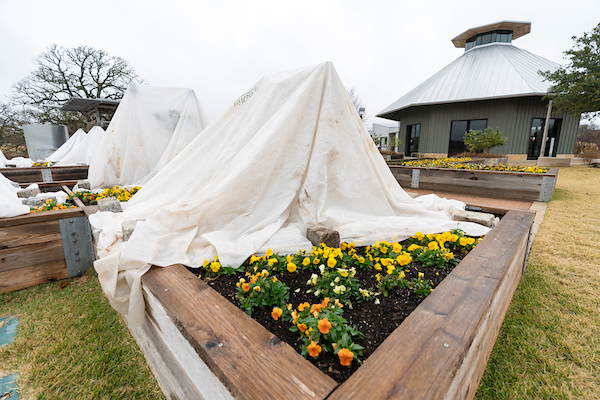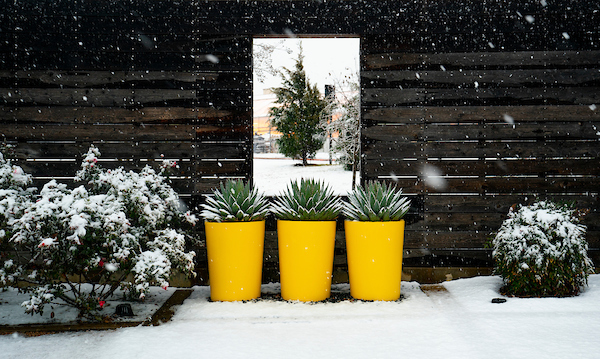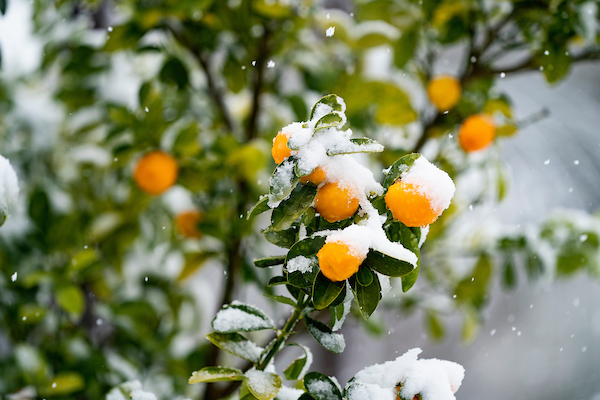Five steps to prepare your garden for winter
Texas A&M horticulturist offers expert garden advice to enter the cool season with confidence
Early fall is the best time for Texans to prepare their garden for winter. A good rule of “green” thumb is the farther north you live in the state, the sooner you need to start preparing.
“Texans should start thinking about preparing their garden for winter in early fall because you don’t want to be caught off guard by cooler temperatures or run out of time,” said Michael Arnold, Ph.D., director of The Gardens at Texas A&M University and professor of landscape horticulture in the Texas A&M College of Agriculture and Life Sciences Department of Horticultural Sciences, Bryan-College Station.
“Planning ahead helps optimize your garden,” Arnold said. “Most of Texas doesn’t have as well pronounced seasons as other parts of the country, so we can enjoy gardening most of the year — with a little advance planning and preparation.”
Arnold shared five actions Texans should take to prepare their gardens for the coming season. He also noted that there are many resources available through the Texas A&M AgriLife Extension Service to help gardeners. Contact your local AgriLife Extension office to connect with local experts.
Weed, clean and prune
Fall is the perfect time for garden maintenance like pruning and removing dead or unwanted plants. Weeding and applying preemergence weed killers will also minimize the work your garden requires later.
When plants go dormant for winter, it’s time to prune. Arnold recommends removing dead limbs and overlapping branches on trees, setting scaffold branching on orchard plants, and pruning shrubs that bloom on new wood — the current season’s growth — by early February. Plants blooming on old wood — the previous season’s growth — should be pruned immediately after flowering in the spring.
Use fallen leaves as mulch or compost
Fallen leaves make an ideal mulch or compost. It is never too early to mulch because it keeps in moisture and protects roots from extreme temperatures. Make sure the mulch is down before the first hard freeze in your area. Arnold also recommends using mulched leaves or shredded bark around the crown of tender perennials for protection, just be sure to remove it prior to resumption of growth in the spring.
Protect plants and pipes
Potted plants have roots that will get colder than those planted in the ground, Arnold said. Tropical plants will need to be in a warmer area of a home with a sunny window, while other plants can be placed in a garage with a window or on a protected porch.

If landscape plants are sensitive to the cold, you might want to take cuttings to propagate and overwinter. Arnold recommends watching for cold nights and observing at-risk plants that may need to be protected. Light blankets or tarps may be placed on them overnight to protect them from frost.
An important and sometimes overlooked “winterization” chore for homeowners is to locate their drainage and cutoff valves to protect outdoor pipes and irrigation systems. Irrigation pipes should be drained prior to the first hard freeze. Exterior spigots and exposed pipes should also be covered with insulators.
Clean, repair tools and organize
Winter is a great time to clean and maintain tools like shears and lawnmowers, Arnold said. It gives gardeners time to repair and replace tools they don’t immediately need. It’s a good time to sharpen blades and perform routine maintenance. It might also be a good time to put some tools and products away for the winter.
Consider planting winter vegetables and plan spring plantings
Many parts of Texas still have time for one last late fall vegetable planting. Now is the time to transplant cool-season veggies if you live in warmer parts of the state. Cool-season veggies are a great way to extend garden productivity and improve your soil for the next season’s produce.







